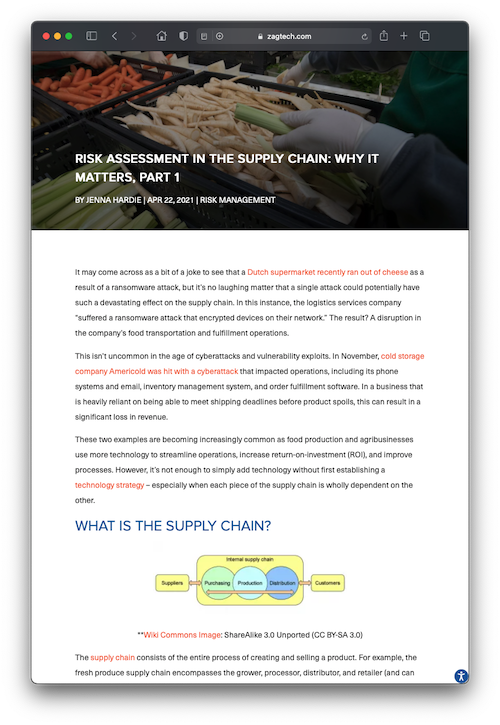With cyberthreats on the rise, now is the time to look beyond your business operations and IT security to that of your suppliers and vendors.
The agribusiness supply chain is complex. Take the fresh produce industry, encompassing the grower, processor, distributor, and retailer (in addition to logistics, cooling, packaging procurement, shipping, and more). All are crucial and if one participant is disrupted or missing, it can result in big losses of product and revenue.
Here’s another way to think about it: Your suppliers’ security is now your security.
Supply Chain Risk Assessment
Conducting a supply chain risk assessment within an agriculture-focused company begins with looking at the company’s supply chain and mapping it to identify dependencies, how vendors fit into the overall picture, and whether holes exist.
Supply Chain Risk Management
Supply chain risk management takes the information collected from the assessment stage and identifies potential influences and “blockers” to the supply chain that can affect activity. It takes strategic steps try to alleviate interruption to the supply chain process.
How to Identify Vendor Risk
Engaging in third-party risk assessments offer continuous cyber risk management for your business, instantly identifying vulnerabilities, and advanced cyber threats that can take down your supply chain.
But identification is only the first step. What comes next is engaging with a trusted IT partner who can take the results and translate them into actionable insights that help your entire organization manage risk.
Risk Management: How It Works
Identify The Risk
Engage with an external third party to assess vendor risk.
Prioritize Partners
Identify vendors based on their potential business impact.
Collect More Information
For at-risk vendors, determine risk levels and circumstances that can affect processing.
ESTABLISH CLEAR COMMUNICATION
Create processes, procedures, and policies to help vendors improve at-risk behaviors.

The Supply Chain Journey
What do Dutch supermarkets running out of cheese and cold storage company Americold being unable to assign trucks to a door have in common? Separate cyberattacks in both cases.
The fallout? Business interruptions preventing trucks from shipping, produce reaching retail shelves, and lost revenue through the entire supply chain.
Learn more about assessing and managing supply chain IT risk in our series on the blog.

Reduce Your Supply Chain Risk
Your suppliers’ security is now your security. Learn which suppliers are a risk to your business.
The U.S. Department of Homeland Security labeled agribusiness one of 16 critical infrastructures at a higher risk for a cyberattack than other sectors.
While technology is enabling supply chains to be more operationally efficient, poorly managed IT systems and software can lead to cyber breaches, interrupted operations, and downtime severely impacting your revenue.
